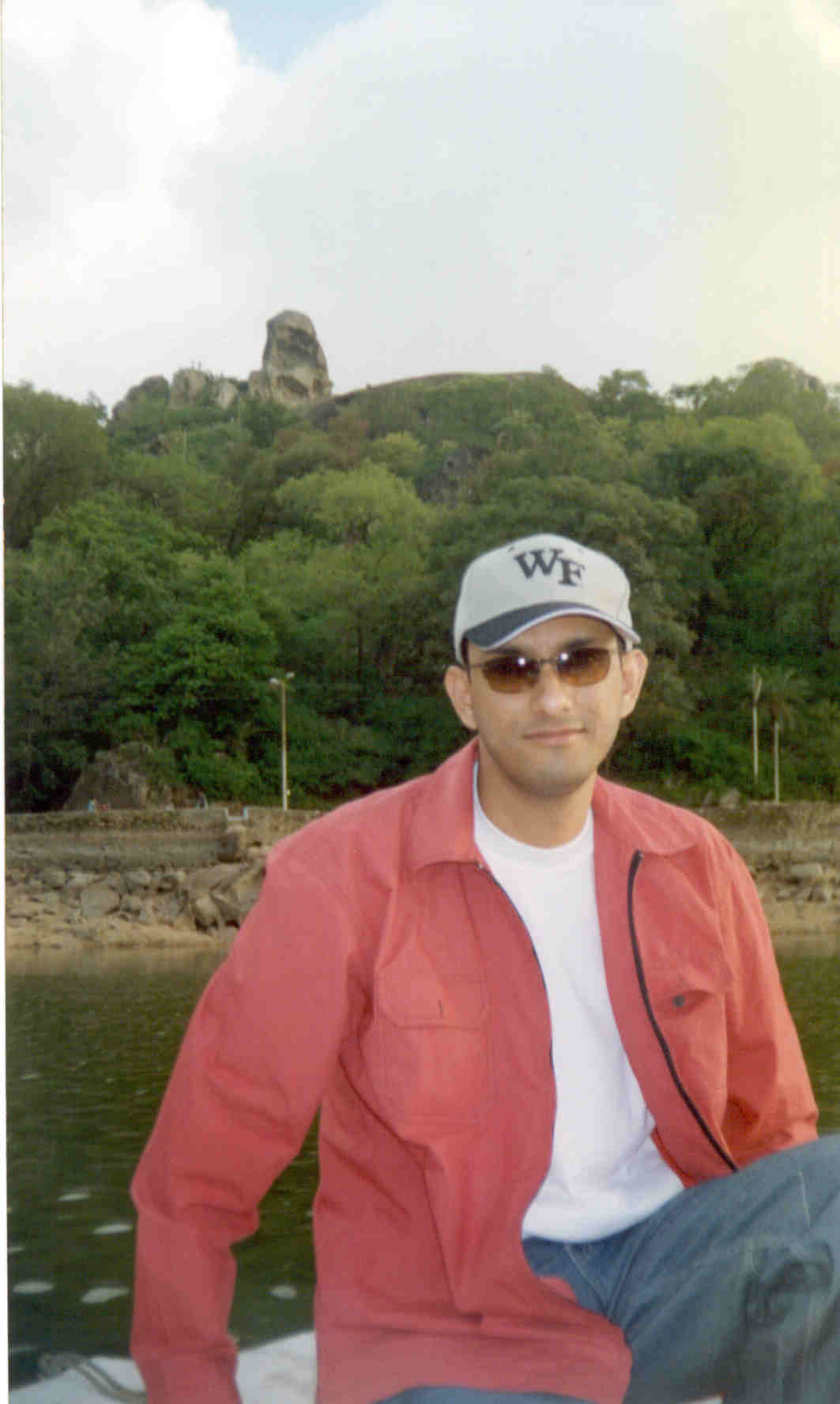
Email me at [email protected]
The Tibetan prayer wheels and Buddhist monasteries have always intrigued me; the whole enigmatic aura seemed just too difficult to resist. Finally in the winters of 2003 I with my friend, Charles Samuel, made a plan to check out the Little Tibet in India.
We made train bookings from Old Delhi railway station to Pathankot which is on the foot hills from where one can take a bus, taxi or an enchanting narrow gauge train for onward journey towards Dharamsala. Remember to reach the Old Delhi railway station in time; most roads to the train station are chock a bloc during rush hour. We had booked tickets well in advance for an air-conditioned coach. (Second class/ non- AC travel can be very uncomfortable in India).
It's an overnight trip to Pathankot and if the train is on schedule (it is not uncommon for trains to be delayed) it should take you 11 hours to reach. Thereafter we preferred to travel by narrow gauge train to the Kangra Mandir station (or Jwalamukhi Road station) and then caught a bus to Dharamsala. However, a more comfortable option is to take a direct bus or taxi to Dharamsala from the Pathankot train station. If, however, a mountainous train ride exits you like us, take this old "Kangra Queen" train which leaves Pathankot station in the morning. By the time we reached Pathankot "Kangra Queen" had already left so we had to take the next train which is used by the local population and can really get crowded; but as long as you have seat, the journey is not much uncomfortable. This train passes through small towns and villages travelling at a low speed. One can enjoy some good views during is journey which takes close to 5 hours to reach Kangra Mandir station. As advised by some local people, we got off at Jwalamukhi Road station and then caught a bus for Kangra town and another one to Dharamsala. We finally reached Dharamsala at 9:30 PM and by that time there the last bus and jeep to McLeodganj had left; since taxis were available, we hired one and reached the Little Tibet in India.
Dharamsala is synonymous with the Tibetan government in exile and the Dalai Lama The actual seat of the Tibetan leader and the community is in McLeodganj which is further 9 km from Dharamsala and is in, what is know as, Upper Dharamsala. You can get a bus or a jeep from Dharamsala to McLeodganj for just Rupees 7. During winters the jeep service stops at around 8 PM, so be prepared to shell out Rupees 100 for a taxi. Dharamsala is of little interest to tourists and there is nothing much to see except the Kangra Art Museum. Almost all tourists stay in McLeodganj which is where Tibetans live.
We had made prior booking at Hotel Tibet which is in the heart of McLeodganj town and offers good Tibetan hospitality at reasonable rates. It has a good restaurant and a cozy bar. If you are planning a longer stay, then opt for a budget hotel. There are many choices in the budget category; Hotel Green on Bhagsu Road is a good option. There are plenty of eating options here; I had Tibetan food during my entire stay. Try out the Canadian and Farmer's breakfast at Hotel Green; it is served with Tibetan bread which tastes divine with honey. Do try the apple tea at the Snow Lion Restaurant on Jogibara Road opposite the red prayer wheels. Momos and flat noodles are my favorite Tibetan delicacies. Try the cookies with espresso coffee and pastries at the Pastry Shop on the Bus Stand.
We reached McLeodganj on Christmas day (rather night) and the next day we went to St. John's Church in the wilderness. This beautiful church is located in the forest and is just 2 km from McLeodganj. We walked down to this church which has an old cemetery where those British soldiers and their families lay in rest who were killed in an earthquake which hit the region more than 100 years ago. The building itself is more than a century old and deserves better care. At first sight it looks haunted but we fell in love with it by the time we left the place. It is definitely worth a visit.
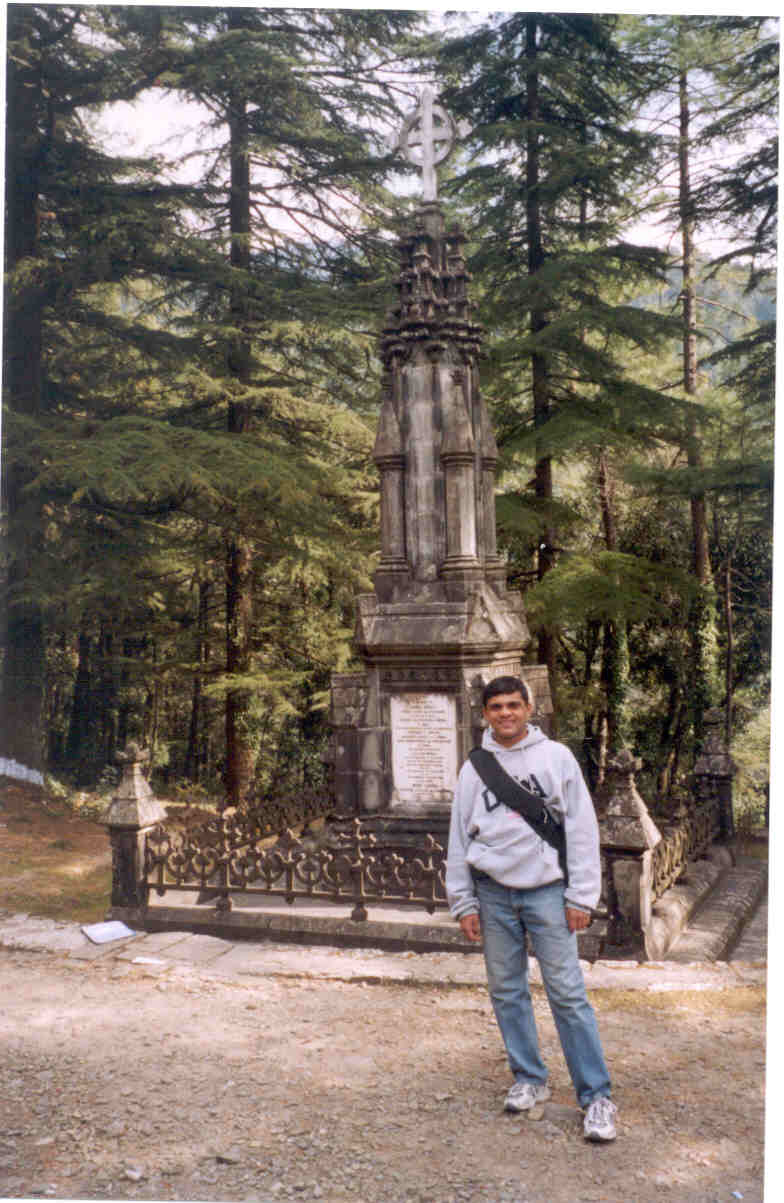

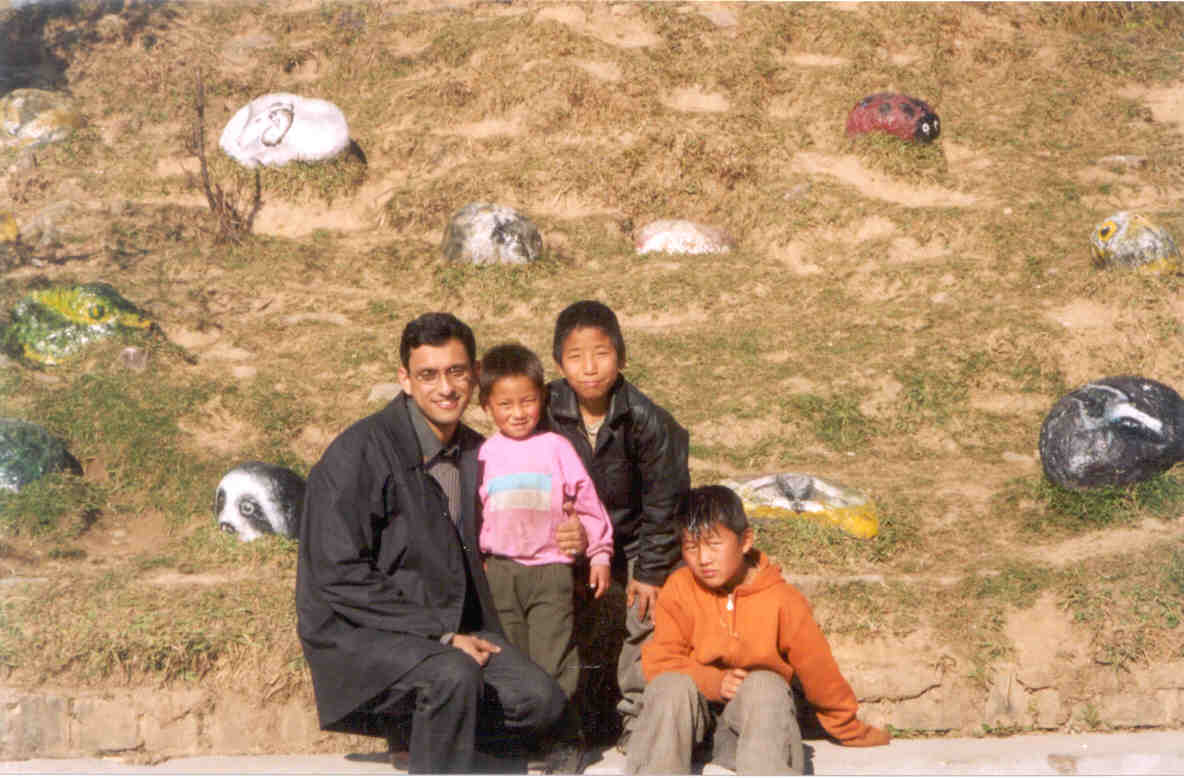
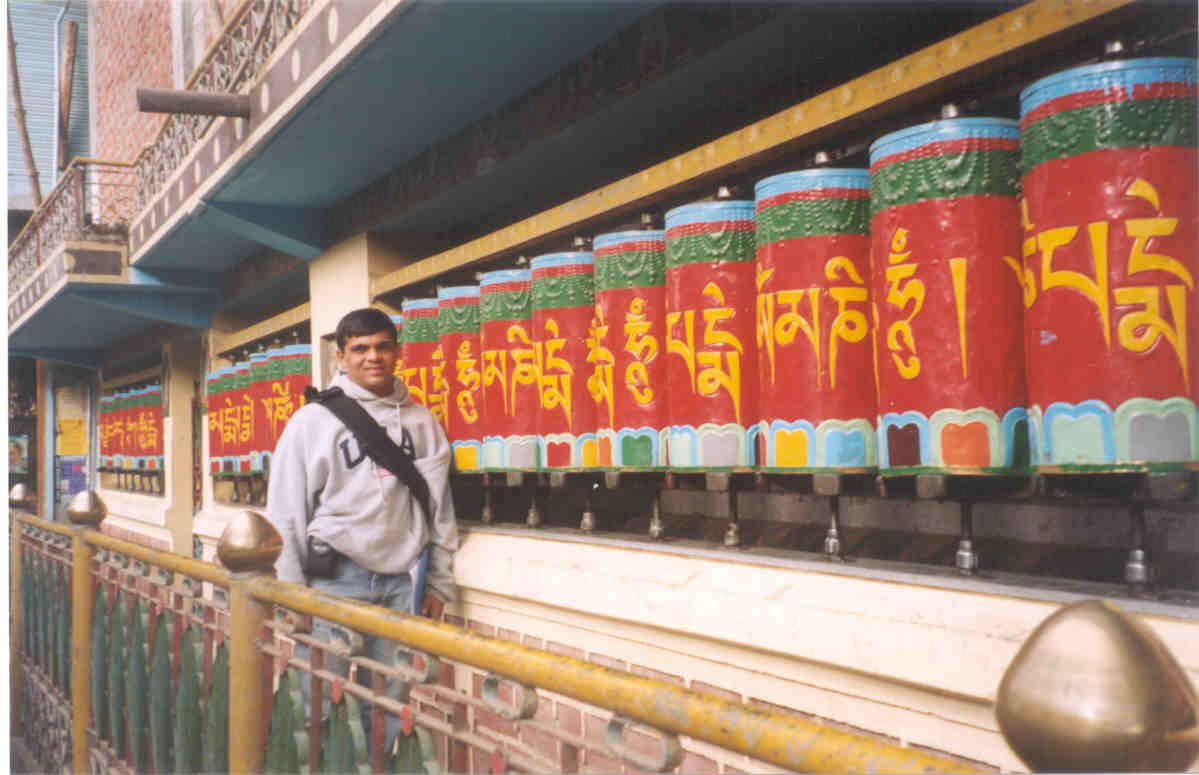
From Dharamkot we took a short cut down hill to Bhagsu. There is a Hindu temple there and a waterfall. We purchased some small Tibetan brass bells (like wind chimes) which are supposed to bring you good luck (one of them now hangs in my car). We were told that the waterfall would be dry so we made no attempt to go there. Do make inquires about the waterfall before going all the way to check it out. From Bhagsu it is a flat walk back to McLeodganj and on your way you can get some good views of the town.
Later during the day we went to the Dalai Lama's temple. It is on the far side of McLeodganj and is a modest copy of the majestic Namgyal Monastery back in Tibet. Don't miss the Tibet Museumat the monastery gate; it depicts the Tibetan struggle and their sufferings at the hands of ChinaThe main temple is just opposite to the Dalai Lama's residence and has beautiful statues and frescos of Buddha and other Tibetan Gods. On a typical afternoon one can see Tibetan monks debating in the monastery with their legendary clap of hands. The monks and nuns have shaved heads and wear maroon coloured mantles.
A monk at the Namgyal Monastery recommended Dip Tsechokling Monastery which is about 1 km below McLeodganj. The monastery was built in 1986 in the forest as a reminder of the original one in Tibet. This beautiful monastery is home to many monks who are very friendly and were kind enough to open the locks and allow us inside. The steep climb back up to the town is just a small price to see this beautiful place.
Next morning was sunny and we went back to Dharmkot for views of the Dhauladhar peaks. To our disappointment we found no good vantage point there and walked further 4 km up hill in the pine forest but got no better view. Finally tired we walked back to McLeodganj and took a bus for Dharmsala. Our next destination was the Norbulingka Institute for which we took a bus for Sidpur and got off at the Sacred Heart School; the institute is a further 15 min uphill walk. The institute promotes Tibetan culture and is worth a visit. The entire institute is tastefully set among beautiful gardens and ponds while the mighty Dhauladhar mountains form the backdrop. The institute derives its name from the summer place of the Dalai Lama in Tibet.
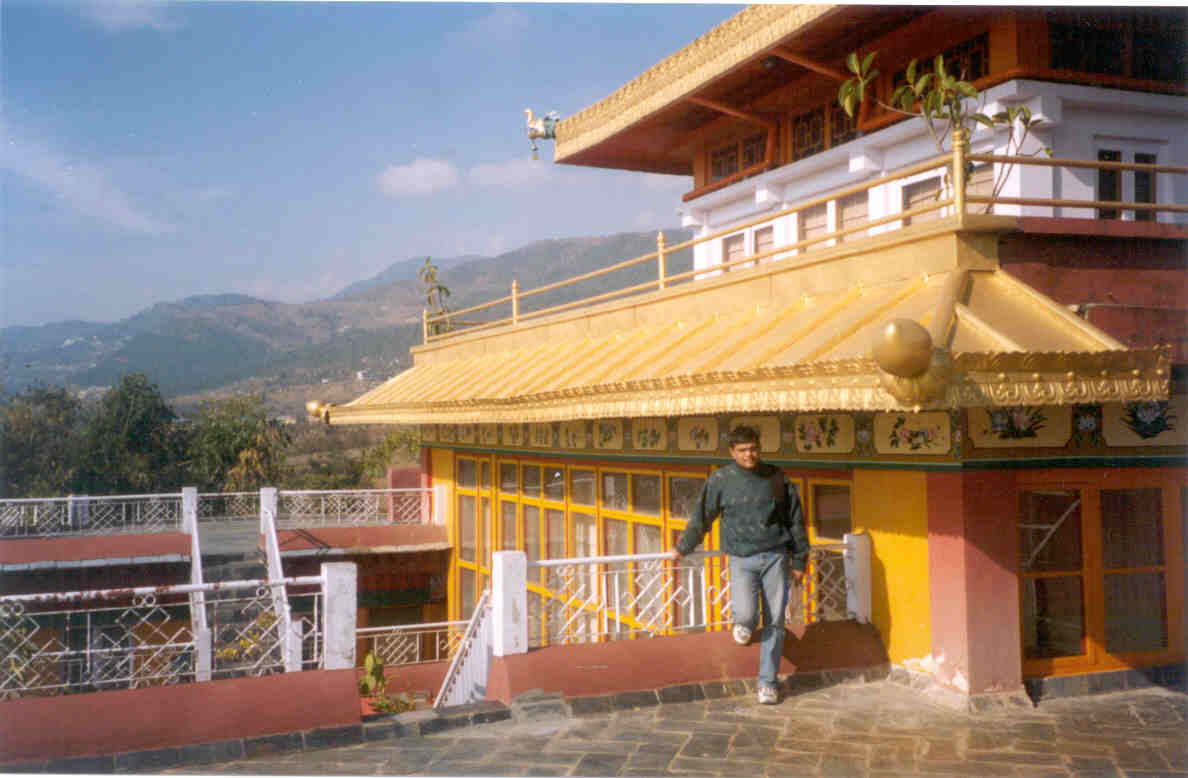
Another 2 km from the main road is the Taragarh Palace Hotel belonging to the erstwhile maharaja of Kashmir. We didn't see it, but I would recommend you to visit this beautiful Hindu palace. We were in Dharamsala at around 8:30 PM and then it was back to McLeodganj by taxi since we had again missed the last bus and jeep.
McLeodganj attracts many international tourists we met a man from Ireland who had been there for over 2 months, he was teaching English at a Tibet school. An Australian woman was learning Tibetan language and to our surprise was talking to Tibetans in their language. Then there were tourists from France and the United States and probably some from Israel among others. McLeodganj is a very friendly place and is relatively crime free. Communication is not a problem; most people understand English and the Indian language of Hindi. You'll find public phones and Internet kiosks in abundance.
The next day the Dalai Lama was giving public audience at the main Namgyal Monastery temple. There was a lot of rush and high security; since the guards didn't allow cameras we came back to the hotel packed our bags and proceeded with the second leg of our vacation - the beautiful hill station of Dalhousie. Now, that's another story.
No sooner did I reach Delhi than I started missing McLeodganj. The town had a distinct culture and a very warm feel even in the chilly december winter air. My trip to the Little Tibet in India has left footprints in my mind. The whole place has a magical appeal and I'm sure it will remain with me throughout my life.
There are other regions in India that share Tibetan culture and religion. Also in north India are places of Lahual, Spiti in the province of Himachal Paradesh and Ladakh in the province of Jammu and Kashmir. Both these provinces can be covered in the same trip. In north east of India is the beautiful state of Sikkim where one can find similar Buddhist culture. A little further away is the Himalayan kingdom of Bhutan that also has a unique Buddhist culture similar to that of Tibet.